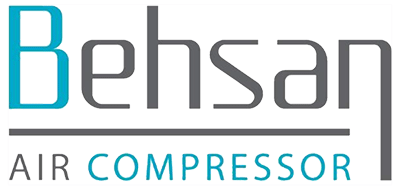
Screw Compressor
TS-BD SERIES

Screw Compressor
TS-FF SERIES

Screw Compressor
TS-DD SERIES

Screw Compressor
TS-VS SERIES
Behsan Screw Compressor
Screw compressors use two helical screws to compress air, but the main difference is that the screws do not collide. Because there is no contact, less wear and tear occurs, resulting in less maintenance. This mechanism is different in terms of heat, noise level, size and efficiency.
One of the best uses of a screw compressor is its continuous operation. Because there is less to overheat and wear, it can operate without duty cycles. This advantage also means that the compressor can be sized to meet CFM requirements rather than buying larger sizes that allow for duty cycles. There is also less need to clean the valve and therefore less need to shut down the compressor.
The screw compressor is one of the most common compressed air production devices, the way it works is as follows:
After turning on the device, the ambient air first passes through the filter and enters the air conditioner.
In the aerator part, there are two spiral rotors in the form of male and female, which rotate alternately with a very small distance and slack. In this section, the air from entering the compressor is trapped in the space between the two spirals and the shell, and then due to the continuous volume reduction, the kinetic energy of the air molecules increases and is compressed.
Pressure increase in screw compressors starts from one side. At the end of the spirals, the compressed air is released and after filtering the oil, it is stored in the compressed air tank.

